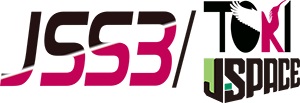Research on Airframe Noise Reduction Design (FQUROH-2)
JAXA Supercomputer System Annual Report February 2023-January 2024
Report Number: R23EDA101R21
Subject Category: Aeronautical Technology
- Responsible Representative: Takashi Aoyama, Program Director of Aviation Technology, Aviation Technology Directorate
- Contact Information: Takehisa Takaishi, FQUROH-2 Project Team (Airframe Noise Reduction Technology Project Team), Aviation Technology Directorate(takaishi.takehisa@jaxa.jp)
- Members: Takehisa Takaishi, Mitsuhiro Murayama, Yasushi Ito, Takashi Ishida, Yoimi Kojima, Kazuomi Yamamoto, Kentaro Tanaka, Tohru Hirai, Gen Nakano
Abstract
In order to meet the projected demand for air travel, strengthen the international competitiveness of Japan’s airports, and improve passenger convenience, major airports are considering increasing the number of takeoffs and landings. To achieve noise reduction in the areas surrounding airports even with the expected increase in the number of takeoffs and landings, it is necessary to increase the maturity of the technology for reducing airframe noise generated by high-lift devices and landing gear. In this project, we have developed a flight test plan using a commercial aircraft to demonstrate airframe noise reduction as part of activities aimed at practical development of airframe noise reduction technology. Computational simulations were used to verify the feasibility of practical noise reduction concepts and design methods. This computational activity, based on Large/Detached Eddy Simulations (LES/DES), is used to understand the mechanism of noise sources, predict noise levels, and design noise reduction devices.
Reference URL
Please refer to http://www.aero.jaxa.jp/eng/research/ecat/fquroh/ .
Reasons and benefits of using JAXA Supercomputer System
The JSS3 has been used to understand the detailed physics of noise generation and to optimize noise reduction designs. The FQUROH project aims to accelerate the technology maturity of airframe noise reduction methods using advanced, large-scale, high-fidelity computational simulations on the JSS3’s high-performance computing platform, and to demonstrate the high-fidelity design technologies through flight tests. Computational simulations using the JSS3 have made it possible to design low-noise devices by understanding detailed physical phenomena that were difficult to obtain through wind tunnel testing alone.
Achievements of the Year
Unsteady CFD simulations were performed to evaluate the noise from the slats on the leading edge of the wing, which is one of the main noise sources during landing approach of passenger aircraft. The noise reduction devices designed for the flight demonstration aircraft were also evaluated with the 30P30N airfoil, which is widely used in aircraft noise prediction benchmark problems, and the effects on the amount of noise reduction due to differences in airfoil shape, slat configuration, and layout were evaluated (Fig. 1). In addition to flight demonstration of the developed noise reduction technology on passenger aircraft, this project plans to apply the technology to a standard high-lift configuration model representing the latest passenger aircraft geometry (High-Lift Common Research Model – CRM-HL) and evaluate the noise reduction to show that the same technology is effective for common aircraft configurations. In addition to the aeroacoustic analysis using a lattice Boltzmann method on Cartesian meshes, a Navier-Stokes method on hierarchical Cartesian meshes is being evaluated and its basic verification was conducted.
Publications
– Non peer-reviewed papers
Yamamoto, K., Tanaka, K., Hirai, T., and Murayama, M., “A Numerical Study on Noise Generation Caused by Slat Tracks,” AIAA Paper 2023-4478, AIAA AVIATION 2023 Forum, San Diego, CA, June 2023, DOI: 10.2514/6.2023-4478.
Usage of JSS
Computational Information
- Process Parallelization Methods: MPI
- Thread Parallelization Methods: N/A
- Number of Processes: 192 – 256
- Elapsed Time per Case: 18 Hour(s)
JSS3 Resources Used
Fraction of Usage in Total Resources*1(%): 0.13
Details
Please refer to System Configuration of JSS3 for the system configuration and major specifications of JSS3.
| System Name | CPU Resources Used(Core x Hours) | Fraction of Usage*2(%) |
|---|---|---|
| TOKI-SORA | 20757198.76 | 0.94 |
| TOKI-ST | 252037.92 | 0.27 |
| TOKI-GP | 0.00 | 0.00 |
| TOKI-XM | 0.00 | 0.00 |
| TOKI-LM | 3783.36 | 0.29 |
| TOKI-TST | 0.00 | 0.00 |
| TOKI-TGP | 0.00 | 0.00 |
| TOKI-TLM | 0.00 | 0.00 |
| File System Name | Storage Assigned(GiB) | Fraction of Usage*2(%) |
|---|---|---|
| /home | 55.94 | 0.05 |
| /data and /data2 | 18881.96 | 0.12 |
| /ssd | 669.34 | 0.06 |
| Archiver Name | Storage Used(TiB) | Fraction of Usage*2(%) |
|---|---|---|
| J-SPACE | 714.27 | 2.57 |
*1: Fraction of Usage in Total Resources: Weighted average of three resource types (Computing, File System, and Archiver).
*2: Fraction of Usage:Percentage of usage relative to each resource used in one year.
ISV Software Licenses Used
| ISV Software Licenses Used(Hours) | Fraction of Usage*2(%) | |
|---|---|---|
| ISV Software Licenses(Total) | 403.51 | 0.18 |
*2: Fraction of Usage:Percentage of usage relative to each resource used in one year.
JAXA Supercomputer System Annual Report February 2023-January 2024



